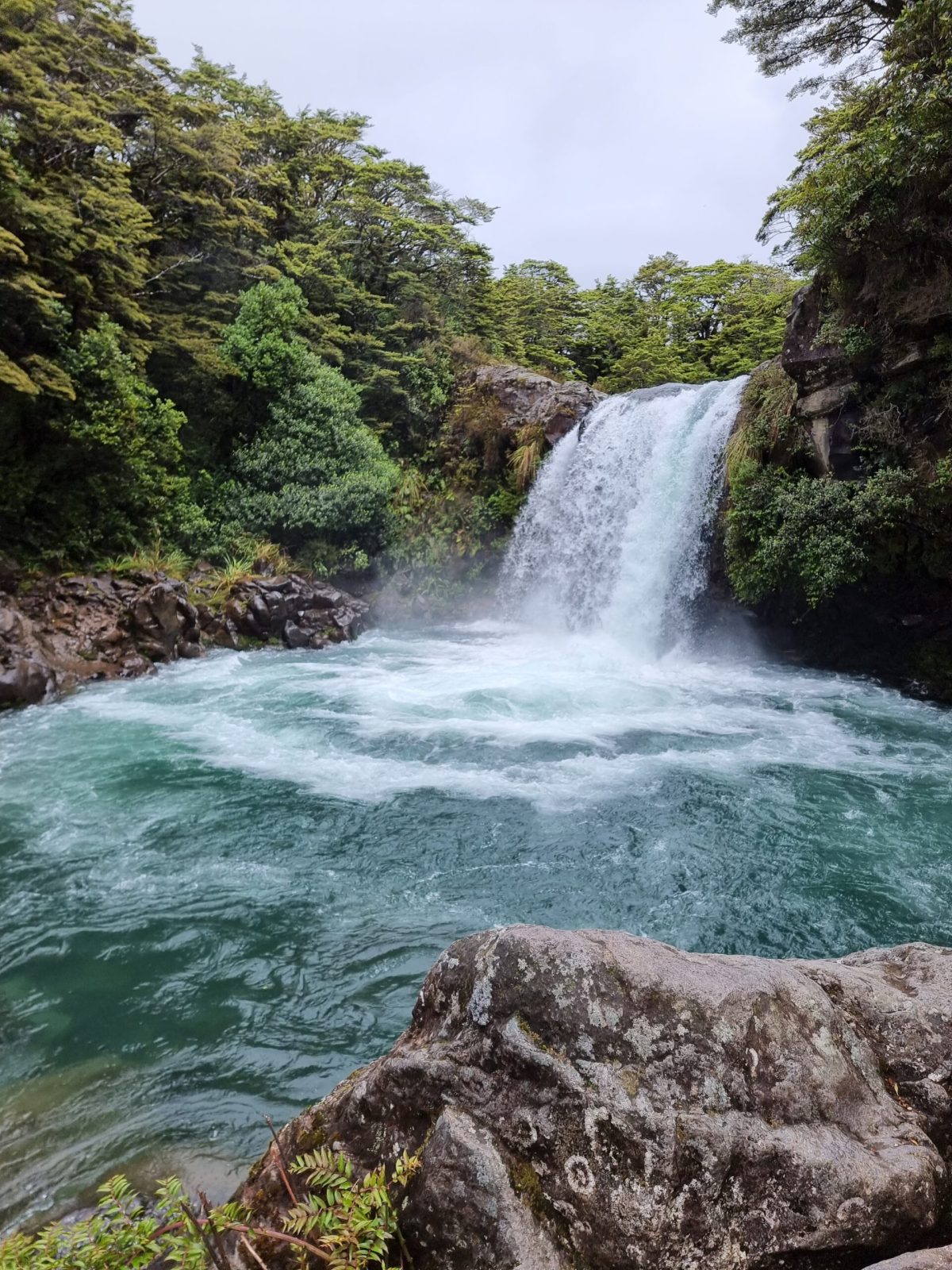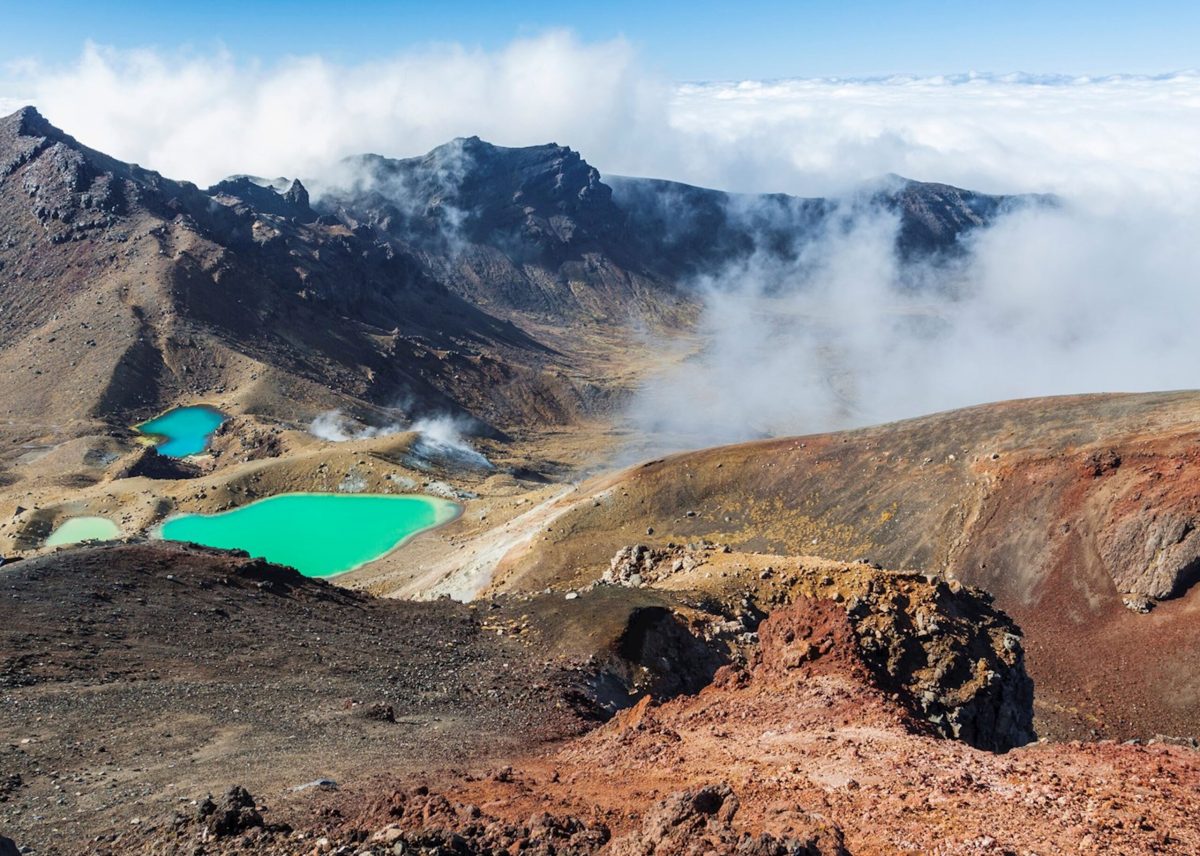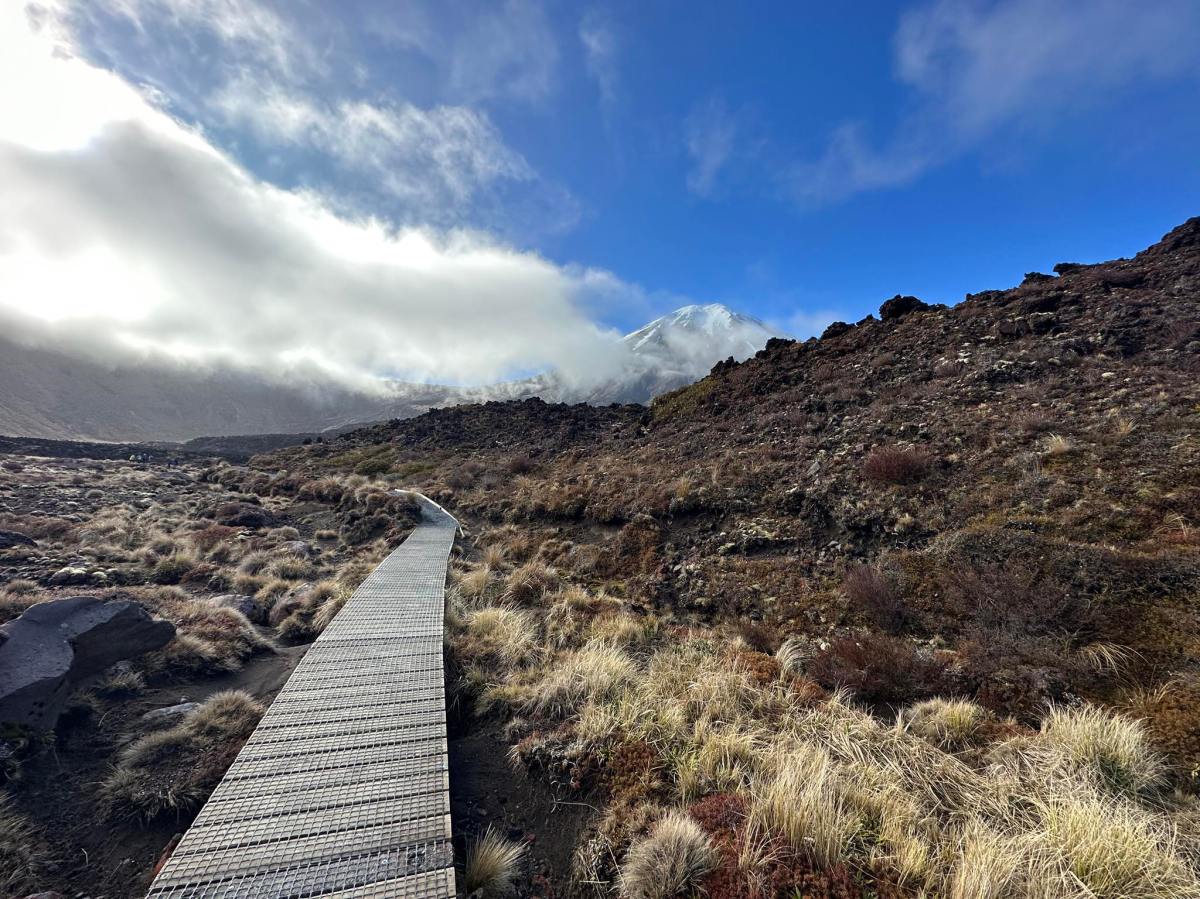Tongariro – a World Heritage Site
The Tongariro Alpine Crossing winds through mountains sacred to Ngāti Hikairo ki Tongariro of Ngāti Tūwharetoa. Every step is an opportunity to connect with the essence of the land and ultimately contribute towards its care. Honour the requests of Ngāti Hikairo by staying safe, staying on the paths and respecting their home.
Nature and Conservation at Tongariro National Park
This is the perfect habitat for a variety of New Zealand’s native birds. In forested areas, you may see bellbird/korimak, tūī, New Zealand robin/toutouwai, tomtit/miromiro, fantail/pīwakawaka and maybe New Zealand’s smallest bird the rifleman/titipounamu. Part of the shuttle fee of about $40 helps the DOC with conservation projects.
To learn more about the conservation projects, please visit the DOC website – https://www.doc.govt.nz/our-work/


The generosity and foresight of Ngāti Tuwharetoa saw the heart of the mountainous area made sacrosanct in 1887, with the intent that the Crown would stand alongside Ngāti Tuwharetoa to ensure the continued protection of Tongariro. This led to the establishment of the Tongariro National Park in 1894, a first for New Zealand, and fourth in the world.
In 1993, Tongariro became the first property to be inscribed on the World Heritage List under the revised criteria describing cultural landscapes. The mountains at the heart of the park have cultural and spiritual significance to Ngāti Tuwharetoa and symbolise the spiritual links between this community and its environment. The park has active and extinct volcanoes, a diverse range of ecosystems and some remarkable landscapes.
The continued occupation by Ngāti Tuwharetoa in this environment ensures the cultural, spiritual and environmental values are protected and shared with all those who encounter this dynamic landscape.
History and culture
All waterways including the lakes on Tongariro and his peaks Ngauruhoe and Ruapehu are sacred to local iwi, Ngāti Hikairo ki Tongariro of Ngāti Tūwharetoa.
Kaumātua Te Ngaehe Wanikau asks visitors to the area to respect the sanctity of the maunga tapu (sacred mountains) by not touching or entering any of the waterways including the alpine lakes.
Ngāti Hikairo ki Tongariro places extreme importance on their guardian role in protecting Tongariro and his peaks.
Ngatoroirangi, the founding ancestor of Ngāti Tuwharetoa, the local iwi (Māori tribe), ascended the great mountains of the Central Plateau 30 generations ago. It was then that he named Tongariro and the many features of the surrounding landscape, declaring this area as home for his descendants. It is from these beginnings that Ngāti Tuwharetoa maintains its intrinsic responsibility to protect the mountainous area to which they belong.

